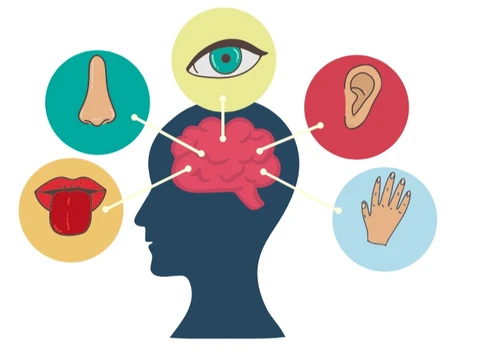
Are you a parent or a caregiver of a child with sensory processing difficulties. So many children and adults struggle with sensory processing difficulties however not many people truly understand how complex our sensory systems are. By understanding sensory processing better we can all help and advocate for those who need extra support.
This post was created by Marra Robert, OTD, OTRL.
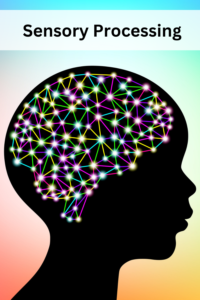
Hi! My name is Marra and I’m a mama and a pediatric occupational therapist who has years of experience working with children with sensory processing difficulties and helping their parents navigate the ups and downs of child development.
I loved being a support person for parents learning about autism, sensory processing, and their child’s individual needs.
This post is all about sensory processing and learning more about our amazing sensory systems.
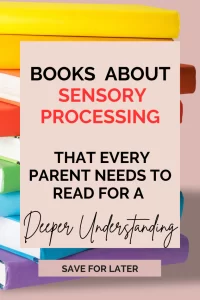
What is Sensory Processing?
Sensory processing is our brain’s ability to process incoming sensory information. We use our senses and incoming information to understand our bodies and the world around us.
We have 8 senses that collect incoming information from the outside world: our visual, tactile, auditory, gustatory, olfactory, vestibular, proprioceptive, and interoceptive senses. Our brain needs to receive and process incoming information to understand the world around us and in order to choose appropriate actions. We all vary on the different amounts and types of sensory input that our bodies need in order to reach a calm regulated state.
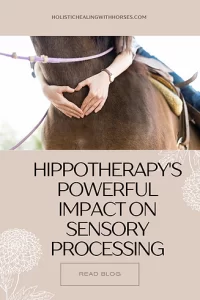
Sensory Processing and our 8 sensory systems
Occupational therapy is hands down the absolute best profession ever! Ok, I may be biased because I’m an OT, but I am kind of obsessed with it. OTs work with people across the lifespan to promote participation in activities that individuals need and want to do.
OTs define occupations as any activity that occupies our time and is important to us. OTs are the ones who specialize in sensory processing. I have my doctorate in OT and worked with pediatrics in both clinic and early intervention home-based settings. Sensory processing was one of my most common and favorite focuses in therapy.
Tactile: Our tactile sensory system is our sense of touch. It comes from our skin, the largest sensory organ in our bodies. Touch is one of the first sensory systems to develop and actually develops before we are even born. It’s what connects us to others and our environment.
Touch is the sense that makes us feel safe. This is why skin-to-skin contact is so important for newborn babies and their parents as it enhances bonding. It makes sense why our babies and littles want to be held all the time and why many of us are comforted by a hug or holding hands.
Visual: The visual sensory system is our sense of sight. A large part of the brain is dedicated to processing visual sensory input. It is closely connected to our vestibular system and helps us interact with objects and our environment.
Over time we develop the ability to focus on important information, such as the teacher or book, and tune out unimportant information, such as what else is going on in the room or what our friends are doing.
Auditory: The auditory sensory system is our ability to hear. Some of us like the silence, while others may need a little background noise in order to focus.
Olfactory: The olfactory sensory system is our ability to smell and is closely related to our gustatory system.
Gustatory: Our gustatory sensory system is our taste and is one of the most sensitive sensory systems. This is a survival mechanism and for good reason. Think of all the things we touch with our hands that we would never put in our mouths. It’s important to encourage little ones to play with their food before taking a bite. This makes them feel more comfortable.
Vestibular: Vestibular sense is our sense of balance and movement. It is located in our inner ear and allows us to be aware of gravity, especially in relation to our head. It allows us to change positions and move without falling.
Proprioceptive: Proprioception is the sense of joint position and where our body parts are in space. The sensory receptors for this system are in our muscles and joints. This is our sense of body awareness. If you close your eyes, can you touch your nose with your finger? This is because of your proprioception.
Proprioception is a very important sensory system because it is the universal calming sensory system. Activities that are recommended to help us calm down and relax such as a massage, a hug, working out, going for a run, punching a pillow, cuddling your kid, and swaddling a baby all activate the proprioceptive sensory system.
Interoceptive: The interoceptive sense is probably the least familiar sense. This is the awareness of how our body is feeling, and it communicates that to our brain. I’m hot, hungry, tired, my stomach hurts, and I have to go to the bathroom, are a few examples.
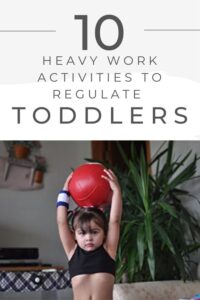
Wow Our Brains are Amaziing!
Our brain must not only process all of the information from our environment but also from our bodies. It’s so much! Wow, our brains are amazing! Think about it. The brain is constantly receiving so much sensory information from all 8 sensory systems all at once, constantly, even while we are sleeping! There are no breaks.
Our brain has to take it all in, process it, decide what’s important to pay attention to and what to ignore, and then choose an appropriate response. That’s AMAZING, at least I think it is.
SENSORY PROCESSING AND OUR LITTLES
Sensory processing is a big job for anyone. Now imagine our little one’s brain that is inexperienced with the world and is trying to make sense of all this information. I really don’t think little ones get enough credit.
The sensory systems don’t fully develop until age 7 so a lot of young kids struggle with this and get easily overwhelmed. We might be thinking, “Wow, that was an overreaction”, and their brain might be thinking, “STOP! I need a break! It’s too much!”
We are all unique, so we respond to incoming sensory information differently. The brain operates based on a threshold regarding incoming sensory information. When someone has a low threshold, their brain notices sensory information very quickly. With a high threshold, it takes a lot of incoming sensory information in order to generate a response.
People vary with their levels of thresholds; however, if their sensory threshold is very high or very low compared to the amount and type of sensory input in their environments, it might impact their daily activities.

WHEN TO SEEK HELP FOR SENSORY PROCESSING CHALLENGES
Since all children are learning to process sensory information and vary on what they need how do you know when to seek help?
OTs are professionals who specialize in sensory processing and can offer help when needed. OTs focus on function and the ability to participate in meaningful daily activities.
So as an OT, I would want to know the impact your child’s sensory needs have on your day-to-day life. Are their sensory needs impacting their social skills? Is it impacting mealtime? Is it impacting their development or play? Is it causing you and your family stress every day? Do you avoid going to certain places because of your child’s sensory needs?
I know it can be scary seeking out help, but I’ve worked with so many children with sensory needs, I’ve seen such monumental growth and changes in these children and their families, and on top of that, we often have a blast in our therapy sessions!
